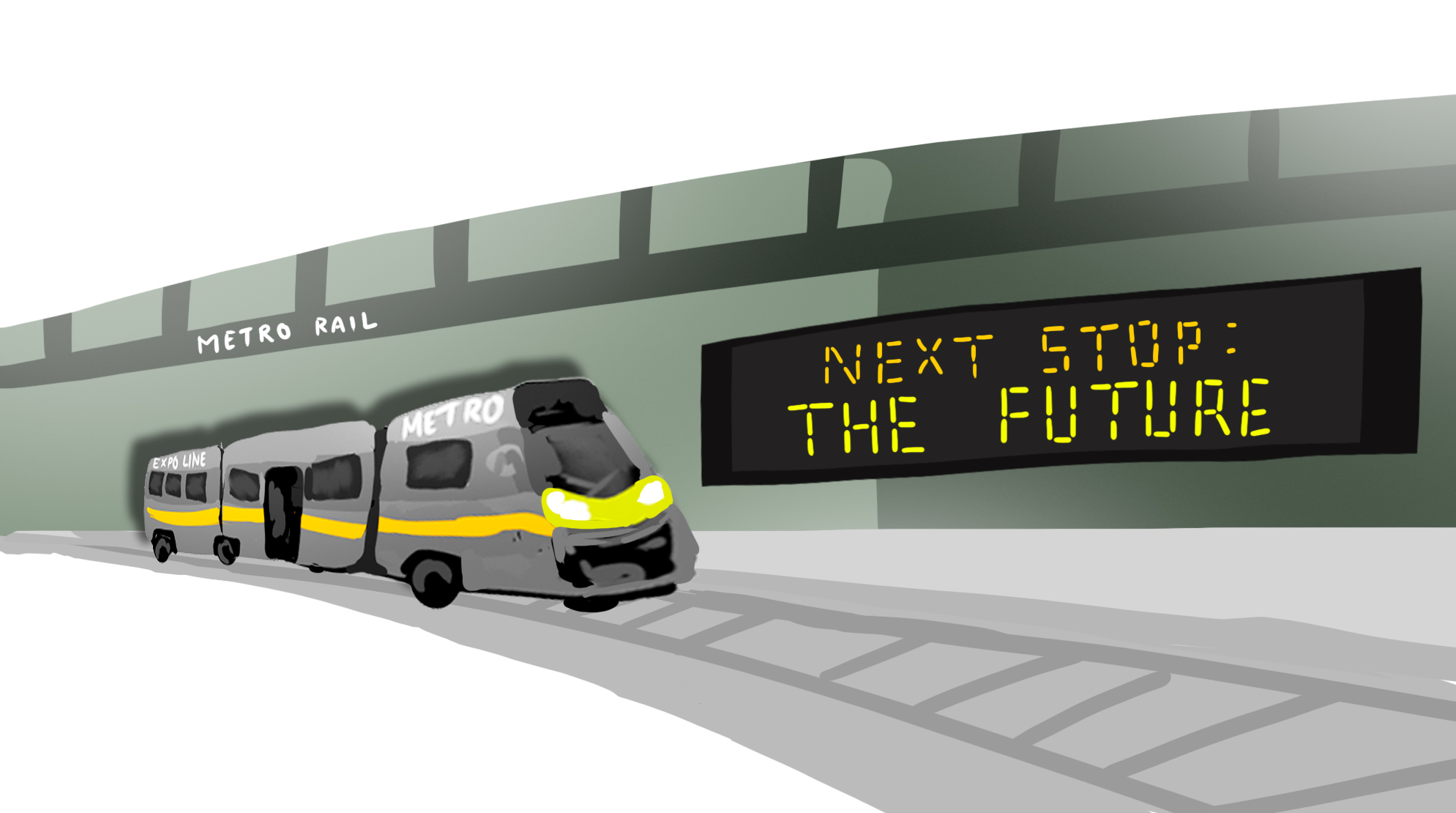Bekzhod Aliev: Expanding metro needs more funds to sustain services

(Kelly Brennan/Daily Bruin senior staff)
By Bekhzod Aliev
May 23, 2016 12:00 a.m.
The new Expo Line reminds us all that very soon, Los Angeles must decide between more trains and more spending.
The LA Metro has already undertaken steps to address this issue. Measure R, a half-cent sales tax increase to help cover the expenses of a growing metro system, was initially introduced in 2009. Without it, the Metro would be down about 14 percent of its proposed 2017 budget. But now, with the ever-expanding metro, the transit authority needs even more money to sustain its services.
This is where Measure R2 comes in, an extra half-cent sales tax boost for LA County, on top of Measure R. Over the next 45 years, this will help finance new transportation projects and programs, accelerate those already being worked on and will soon be voted on in a referendum. Without Measure R2’s approval, the Metro could be facing difficulties looking for comparable funding sources.
If Measures R and R2 pass in November, LA Metro can thank its lucky stars for the needed funds. However, there will certainly be more money problems requiring more taxation or some other source of income. One striking example of such spending can be found in one of the United States’ largest and most transit-friendly cities, New York City.
The subway is one of the essential pieces of the Big Apple, and it’s like an engine for the daily lives of all New Yorkers – I would know, as I am one. The system serves over 1.5 billion riders per year yet experiences at most a handful of mechanical failures during that same span. But it wasn’t always this way.
Before a $26 billion repair project that had been going on since the mid-1990s, New York’s system was a mess – derailments occurred once every eighteen days, motors would literally drop out of cars, and they were lined with graffiti and unsavory individuals. Back then, New York was teetering on the brink of bankruptcy, and in the absence of adequate funds, the subway system fell into the aforementioned disrepair.
Program for Action, a mid-1960s proposal championed by then-Mayor John Lindsay, was the most ambitious subway expansion proposal ever made in the city, but the plan’s Second Avenue Subway line cost taxpayers over $2 billion before it could be completed.
The main lesson to learn from this example is that any expansion of the subway system will come with extreme costs to cover up its aging process. It can certainly invigorate locals and make everyone’s life easier by freeing up the roads and giving those who can’t afford a car a cheaper mode of transportation. But there is always a balance. There is certainly evidence for another decline in New York, and the system has been severely underfunded for years. In 2005, Governor George Pataki said he would only give the system 69 percent of what it requested, a short fall of $8.5 billion over five years that would have gone to capital upgrades and repairs.
Beyond just repairs, there is the bigger financial picture to look at as well. The current fare for a 30-day pass here is $100; in New York, officials have had to rely on riders when the state fails to fund them, and a 30-day pass is $116. This may not seem like much at first, but over a year it could add up to about a $200 dollar difference, which would make it especially difficult for low-income individuals who work for minimum wage.
The Metro plans to pay $410 million for repairs and security in 2017 – imagine when the system gets old and it will need an additional $32 billion on top of its standard budget to repair itself, like the sum Metropolitan Transportation Authority Chairman and Chief Executive Officer Thomas Prendergast asked for just last year. And in addition to simply spending on the rail itself, an expanding system will require more employees on payroll, more insurance, more benefits, fuel, electricity and more. All of this will add up to more and more costs. LA Metro plans to spend $5.7 billion next year, of which Measure R is a huge part; New York will spend $12.6 billion for the same services, an annual difference of $7 billion, not chump change by any means.
Whether the county and its residents will want to pay so much for public transport is still unknown. New Yorkers can’t live without the subway, but can Angelenos? Low income riders would definitely benefit, but they may not be enough to sway public voting opinion and government when the venture becomes $7 billion more expensive. After all, the city’s previous rail system has already closed once before, which means it is not completely indispensable.
So, Los Angeles, revel in the opening of the new Expo Line. Be ambitious, and strive for a future where every part of the city will be reachable without having to sit for hours on the 405. But Angelenos must be ready to pay for it as well.


